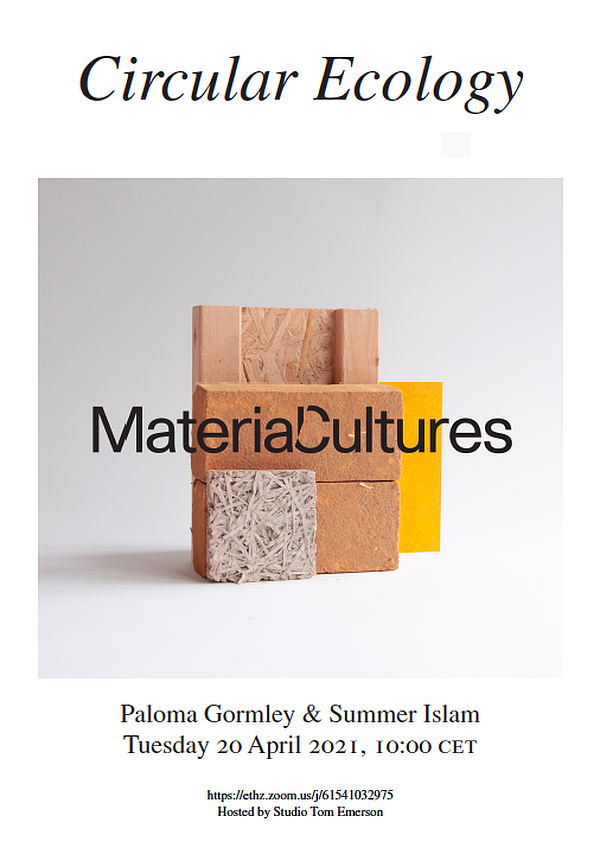Circular Ecology
Material Cultures

A lecture by Paloma Gormley & Summer Islam from Material Cultures
Material Cultures is a not-for-profit research organisation working at the intersection of low embodied carbon and high efficiency off-site construction.
Tuesday 20 April 2021, 10:00 CET
https://ethz.zoom.us/j/6154103...
Hosted by Studio Tom Emerson